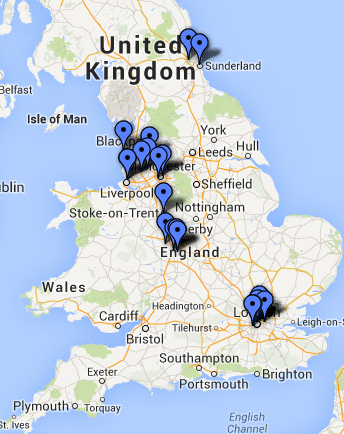BuzzFeed has had phenomenal success over the past year – so I thought I’d jump aboard the bandwagon and use its community feature to write my own guest post.
I’ve reproduced the article below but, to see it on BuzzFeed itself, click this link: bit.ly/Buzz8fans.
1. The Know-it-all
Much more comfortable in his armchair than at an actual game, The Know-it-all is usually surrounded by a couple of doting minions who’ll lap up his every knowledgeable comment. The Know-it-all is surprised by nothing and will disdain those who get excited by anything happening on the pitch.

Smugness has no place in football
2. The Corporate Fan
The Corporate Fan might attend only the big midweek games when he can get a freebie from a business partner, but that won’t put him off venturing his opinions on everything from Diego Simeone’s tactical acumen to Frank Lampard’s waistline.

You won’t see him on a February night at Boundary Park
3. The Thug
A football match is simply an excuse for The Thug to vent his anger at the mediocrity of his everyday existence. While The Thug will pretend his vein-bursting, foul-mouthed rants at opposing fans are in support of his team, what he really wants is an old-fashioned brawl.
4. The Theatre-goer
The Theatre-goer will sit in silence, occasionally shaking his head when his team lets him down yet again. He doesn’t cheer or even celebrate after goals – the only sign he can speak is when someone in front of him stands up, when he’ll immediately shout at them to sit down.

What do you actually enjoy about football?
5. The Ego
The Ego sees a football match as an opportunity to impress a large number of people with his puerile sense of humour and juvenile japes. Similarly to The Know-it-all, The Ego will expect appreciation from all others around him.

We’d rather watch the game
6. The Emo
The Emo took Bill Shankly’s famous saying to heart: nothing matters more than in which net the pig’s bladder ends up on a Saturday afternoon. Even the birth of his children won’t prevent The Emo from missing a game.

Football: more important than life and death
7. The Old Timer
The Old Timer is a pleasant old man who makes a point of shaking everyone’s hand before a game. He hasn’t missed a game since 1963 and wants his ashes scattered in the stadium when he dies.

The Old Timer could teach Luis Suárez a thing or two
8. The Singer
A dying breed within modern football, The Singer spends every Saturday night massaging his vocal chords after their intense workout. He considers missing the warm-up a mortal sin and will abuse anyone who leaves the game before the final whistle.

On your own








